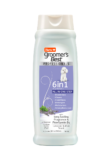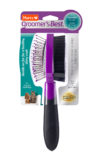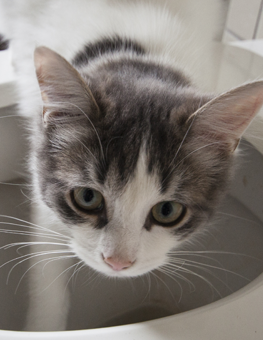How Can Those with Pet Allergies Live Comfortably with Their Pets?
Loving cats and dogs but being allergic to pets is an unfortunate problem to have.

10-20% of human adults are allergic to cats and/or dogs.
It is estimated that around 10-20% of human adults around the world are allergic to cats and/or dogs, and that number continues to grow. Of that 10-20%, there are three types of people: those that choose not to adopt pets, those that choose to adopt pets considered to be hypoallergenic only, and those that adopt pets anyway.
If you’re one of the third type of allergy-having pet lovers, or if you are allergic to pets and considering getting one anyway, how to deal with pet allergies and live comfortably are likely at the front of your mind.
You’re probably not allergic to the pet itself or even its fur – you’re more likely to be allergic to pet dander. What is pet dander, exactly? Dander is flakes of dead skin that naturally fall off the dog or cat. Some people can even be allergic to pet saliva. Thinking of getting a hairless cat or dog as a pet to avoid allergies? Think again. Any pet – as long as it has skin and saliva – can trigger an allergic reaction.
It also doesn’t matter how short or long the pet’s coat is. Even two identical dogs of the same breed can trigger different reactions in humans. One Shih Tzu may send you into a sneezing fit; another may be able to cuddle in your lap with no problems. You can be allergic to any animal, regardless of breed, even if they are considered to be hypoallergenic.
While there are many breeds that tend to irritate those with pet allergies less than others, it is impossible for any dog or cat to truly be hypoallergenic. Breeds considered to be hypoallergenic naturally contain less of the protein found in saliva that sets off human allergies – but all animals will still have a little of it present. You should not adopt a “hypoallergenic” breed such as a Siberian cat or a Poodle thinking that you will not have any allergy symptoms. This just isn’t true.
Symptoms of Pet Allergies
Symptoms of pet allergies will differ from person to person and range from mild to severe. However, coughing, wheezing, sneezing, red and itchy eyes, and runny noses are all common allergy symptoms. Those with more severe allergies to dogs and cats may break into hives or have difficulty breathing when around them.
Treatment for Pet Allergies
The best way to avoid your allergy to cats or dogs being triggered, is, obviously, to avoid them. However, this isn’t always possible. And many people with pet allergies still want to be able to have pets. So what can you do?
- Medication. Your doctor is the best person to discuss the best treatment for pet allergies with you and can let you know what might work best. However, many over the counter allergy medications are enough to combat mild allergies. Antihistamines, decongestants, and nasal steroids can all be effective treatments for allergies. If your allergies are more severe, you may need prescription drugs.
- Allergy shots. They may not be the best fit for everyone, but these shots can control pet allergies in many people. These should be discussed with your doctor.
Other Ways to Deal with Pet Allergies

Vacuuming will pick up pet dander, the bits of dead skin or saliva that fall off of your furbaby.
- Air filters can be effective in managing pet dander. Because your heating and air conditioning can move dander all over your home, purchasing an air filter or placing filters on your vents can help keep pet dander under control.
- Keeping pets out of your bedroom may help in some cases – if you can handle not sleeping with your beloved pet! It won’t fix all your problems, but it may help you breathe easier while asleep.
- Clean regularly. Vacuuming, dusting, sweeping, and mopping will all pick up pet dander and keep your home more allergy-friendly. Remember that you’re not necessarily allergic to your dog or cat himself, but rather the bits of dead skin or saliva that fall off of him.
- Keep your pet well groomed. Regular bathing and brushing can help collect pet dander. Removing dander means it will not fall off all over your home!
- Manage your environment. Carpets trap pet dander. Some furniture, curtains, rugs, and other home decor can do the same. Hard floors are easier to clean and keep free of pet dander.
- Special diet. There are foods available for cats in particular that are said to help control allergies in people by reducing the major allergen in cat hair and dander.
Loving pets and being allergic to them is certainly a hassle and an inconvenience for many people. Although people with severe allergies may be forced to avoid dogs and cats altogether, those with minor allergies can live fairly comfortably with cats and dogs by following the above tips alongside advice from their doctor.
Sources:
Dog and Cat Allergies: Current State of Diagnostic Approaches and Challenges - PMC (nih.gov)
Dog Allergies: Symptoms, Causes, Testing, Treatments and 8 Tips (webmd.com)















